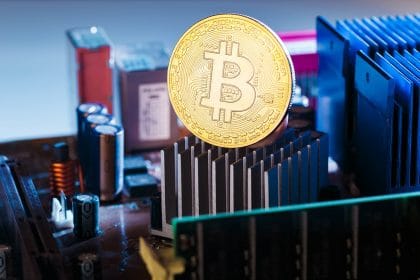[ad_1]
The Bitcoin mining difficulty after reaching its all-time high in October 2020 took drastic steps backward between October 17 and November 2 from 146.5EH/s to 106.6 EH/s.
Bitcoin mining difficulty has just as expected neared its all-time high in response to the recent bull-run driving the price near its all-time high price. Mining difficulty is a concept that explains how time-consuming and difficult it is to successfully solve the complex mathematical puzzle that generates a mineable asset. At this point, finding the hash that perfectly fits each block becomes challenging. Just last month, the Bitcoin mining difficulty reached its all-time high. However, the current 8.9% increase put it just 5% apart from its previous run according to reports.
The Bitcoin mining difficulty after reaching its all-time high in October 2020 took drastic steps backward between October 17 and November 2 from 146.5EH/s to 106.6 EH/s. This was about a 27% drop from its previous record. Following the recent rally, the Bitcoin mining difficulty has reclaimed more than half of its lost percentage to 130.15 EH/s. This has spread across most of the other assets finding their way to their previous all-time high prices with Ethereum reaching a two-year high of 3,719,917,244,648,520 compared to the 2018 ATH of 3,696,664,670,930,580. This is normal as many computing powers battle for the limited blocks.
What the Rising Bitcoin Mining Difficulty Mean to the Asset
The rising of Bitcoin mining difficulty has a historical purpose that is in line with what investors want to hear. Both in 2013 and 2016, the increase in Bitcoin mining difficulty marked the beginning of bullish runs that sent the prices to unimaginable price points. Though it is difficult to ascertain whether the current runs will repeat the BTC bullish history, it is more important to note that this causes transaction fees to rise. Also, the recorded number of unmined transactions in the mempool increases. Currently, the optimal Bitcoin transaction fee according to the report is around $2.60 equivalent to 14,272 Satoshis.
More Lights on Mining Difficulties
In the BTC mining pool, miners or participants share block rewards based on their contributed computing power. Mining is more difficult than speculated. The Bitcoin code creates a lot of hashes of which only one is genuine.
The network is programmed to process blocks every ten minutes. In this case, there is a periodic adjustment of the difficulty. After 2,016 blocks have been mined, the BTC mining difficulty adjusts itself. The direction of the adjustment (higher or lower) depends on the participants and their combined hash power.
The Bitcoin network would need to be kept running by miners even after the entire 21 million Bitcoins are mined. Miners will have to contribute something to earn rewards which would not be a new coin, but a portion of the spent transaction fees within the network. Bitcoin is currently trading at $18,462 as at the time of this publication, and there is a higher chance of breaking its all-time high record both in price and in mining difficulty.
The illustrations were provided by Depositphotos.com
next

Excellent John K. Kumi is a cryptocurrency and fintech enthusiast, operations manager of a fintech platform, writer, researcher, and a huge fan of creative writing. With an Economics background, he finds much interest in the invisible factors that causes price change in anything measured with valuation. He has been in the crypto/blockchain space in the last five (5) years. He mostly watches football highlights and movies in his free time.
[ad_2]
Source link

